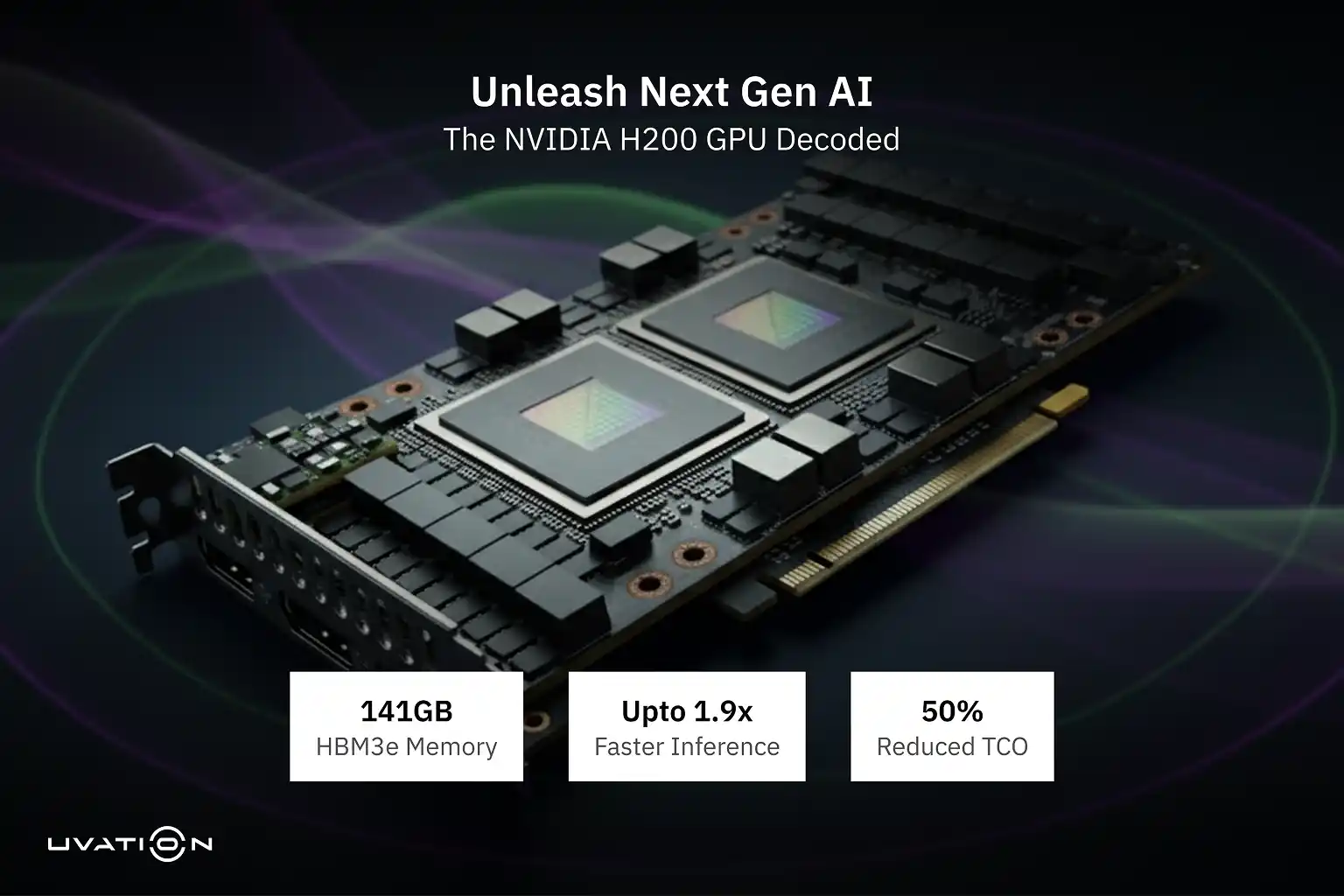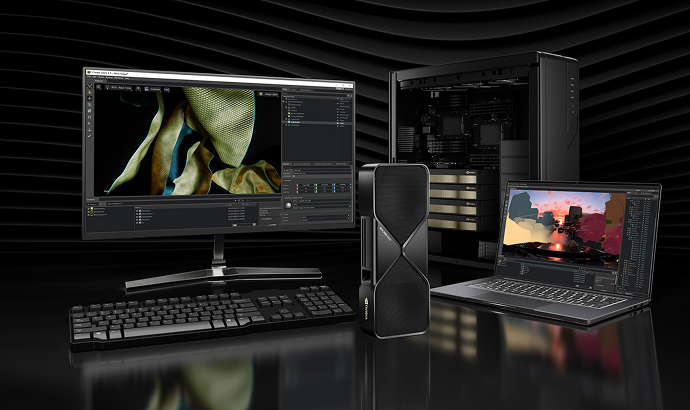

Writing About AI
Uvation
Reen Singh is an engineer and a technologist with a diverse background spanning software, hardware, aerospace, defense, and cybersecurity. As CTO at Uvation, he leverages his extensive experience to lead the company’s technological innovation and development.

The NVIDIA H200 Tensor Core GPU is based on the Hopper architecture and is designed to handle massive workloads for Large Language Models (LLMs). It is engineered specifically to solve the most persistent bottlenecks in modern distributed AI training and inference: memory capacity and bandwidth.
The H200 is the first GPU to utilize HBM3e high-bandwidth memory. This translates into a massive upgrade in capacity, providing 141 GB of GPU memory—nearly double the capacity of the H100’s 80 GB . Crucially, the memory bandwidth has also been significantly boosted to 4.8 TB/s, representing a 1.4x increase over the H100’s 3.35 TB/s.
The expanded memory capacity directly addresses memory-bound workloads, enabling models with over 100 billion parameters, such as DeepSeek R1 (685 billion parameters), to be served reliably while supporting longer input sequences and larger KV caches . For LLM inference specifically, the H200 has demonstrated substantial gains, achieving up to 1.9x faster performance compared to the H100 in workloads like Llama-2 70B .
For high-speed communication within a server (scale-up), the H200 leverages the Hopper architecture’s fourth-generation NVLink, enabling 900 GB/s GPU-to-GPU communication. When paired with NVSwitch, this creates a non-blocking, all-to-all mesh connectivity, which is critical for tensor parallelism (TP) during inference . For scale-out clusters, high-performance GPU interconnects often rely on robust Ethernet fabrics (e.g., 400GbE NICs), which have proven capable of maintaining 97.3% network efficiency under peak AI workloads across 64 GPUs .
Distributed training of MoE models relies heavily on the All-to-All (alltoallv) communication primitive, which can consume 30–56% of training time . Major challenges arise from workload skew and dynamism due to token routing, which creates “straggler effects” where busy Network Interface Cards (NICs) delay the entire collective operation . This is compounded by the two-tier fabric heterogeneity between fast intra-server links (NVLink, 900 GB/s) and significantly slower inter-server links (InfiniBand/Ethernet, 400 Gbps) .
The H200 GPU has a Thermal Design Power (TDP) up to 700W (configurable). A fully integrated DGX H200 system with eight GPUs can draw up to 10.2 kW of power, which is entirely converted into heat . This extreme heat density challenges traditional air cooling , making liquid cooling, specifically Direct-to-Chip (D2C) cold plates, strongly recommended to efficiently remove thermal output . Thermal imbalance in air-cooled systems can lead to clock throttling (frequency reduction) in hotter GPUs near the exhaust, causing performance variability and disrupting synchronization in distributed workloads .
The H200 architecture is engineered for superior efficiency measured in performance per watt , promising up to 50% reduced energy use and total cost of ownership (TCO) compared to the H100 for key LLM inference workloads, because its accelerated performance allows tasks to complete faster . For management, Kubernetes provides the orchestration layer, integrating with the NVIDIA GPU Operator and the Multi-Instance GPU (MIG) feature to partition a single H200 into up to seven independent instances . System health is monitored by NVIDIA System Management (NVSM), an “always-on” engine that uses the NVIDIA Data Center GPU Manager (DCGM) to report critical issues such as NVLink link degradation .
We are writing frequenly. Don’t miss that.
